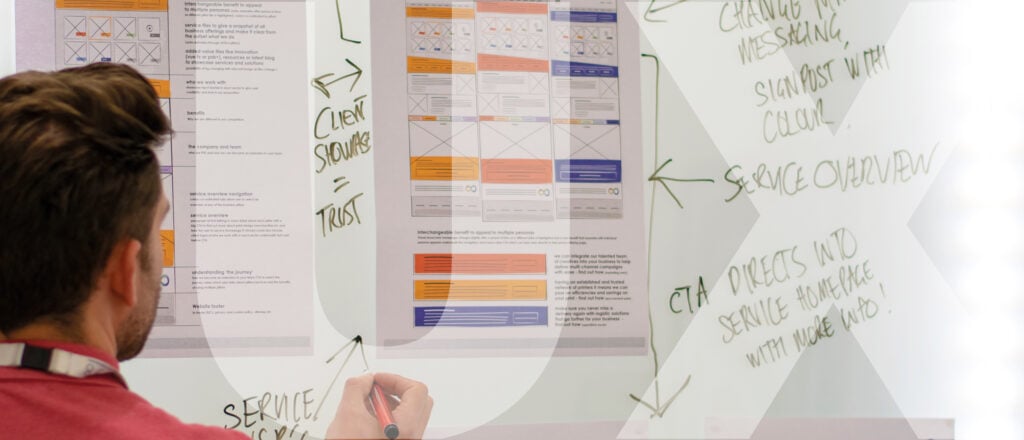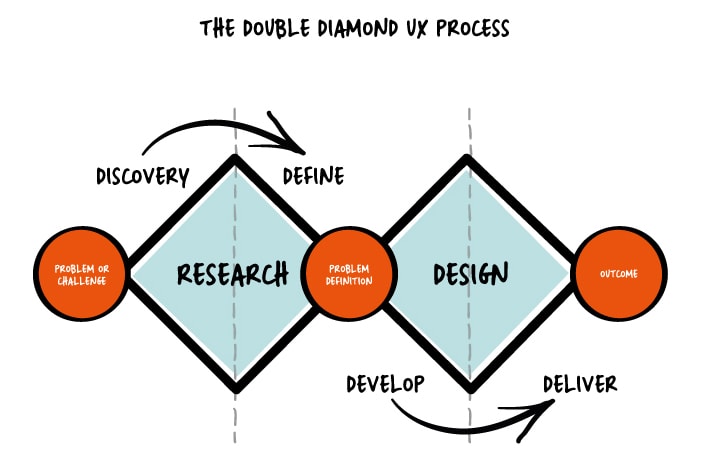Discover how great UX design will transform your website and engage your customers…
Complete our form and a member of the team will be in-touch.
In the world of web design, everybody talks about user experience (UX) and how vital it is to promote customer engagement, but what goes into great UX design, and how can you ensure that your visitors get the best experience?
UX aims to delight your customers and gain not only their loyalty but their advocacy. If the experience of engaging with your brand online is pleasing, customers are more likely to return. With this in mind, it is vital to ensure that your website is fully responsive and works in the same way across all devices and browsers, while also providing your customers with the experience and information that today’s web users expect, as standard.

UX design focuses on a customer-led approach which is based on a thorough understanding of customers’ requirements, attitudes and behaviours and takes account of how they feel. Good UX aims to improve the quality of the user’s interaction with your brand, a great user experience will also boost perceptions of your products and services. User experience relies on quantitative and qualitative data and research to create a well-informed persona of users, that is both evidence-based and objective.
Once you have conducted your research, collected your data, and drawn your conclusions, your findings will form the basis of an iterative process that enables customers to engage in ways that meet their preferences. Understanding that no single, linear route will suit every customer, designing a good user experience should accommodate nuances and incorporate flexibility. Before starting the design process, it is important to agree on your objectives to make sure that these are aligned with your business goals.
There are several recognised UX frameworks that businesses use which have some attributes and themes in common. There are two critical steps for UX delivery as identified in the diagram below which showcases a double-diamond UX process. User experience can be divided into two main elements of research and design. Research should always come first before you move on to the design stage. Once you develop and refine your ideas and create a solution, the next step should be to test and measure the concept.

The research process should enable you to understand users’ issues and challenges and to drill down as far as possible into the detail. Armed with insights from your research, the ideation and design process can begin. The more diverse the team, the stronger and more far-reaching your solutions will be. Involving key stakeholders in this process also ensures that any ideas will be aligned with both business and customer needs.
The next step is to work up a prototype or wireframe before testing this on target users. Testing pre-launch can be carried out simply by enlisting the help of a sample of target users. Or you can invest in A/B testing with two different platforms running live at the same time. A beta version is a limited release of the final version tested amongst a limited audience to eliminate bugs before launch. The feedback and learning from these processes should inform further iterations of the design and functionality.
Yes, because UX principles are based on the use of information, evidence, analysis and insight. The process involves detailed research and testing based on live usage and behaviour and the testing phase presents data that demonstrates whether the customer journey is smooth or requires further adjustment. The more time and attention you pay to this part of the process, the more you will understand your customers’ behaviour and that enables you to deliver a more refined and higher-quality customer journey.
Yes. Data gleaned from the user experience design process can help to educate and inform your business about how customers engage with your website, who your main users are, what they are looking for, and where they might encounter difficulties. Reflecting on this information enables you to develop solutions that improve their experience and ultimately boost engagement and brand loyalty. Responding to UX feedback brings you closer to your customer base and demonstrates that you value their business and are willing to listen and adapt.
Justifying investment in UX is pretty straightforward. Understanding more about your customers means you are more likely to provide solutions that meet their specific requirements. This should lead to more efficient use of the marketing budget, a more streamlined design and development process, a faster route to an end solution and overall, a better understanding of what your customers want. It also enhances your reputation as a company that listens to its customers which in turn builds brand loyalty.
Complete our form and a member of the team will be in-touch.